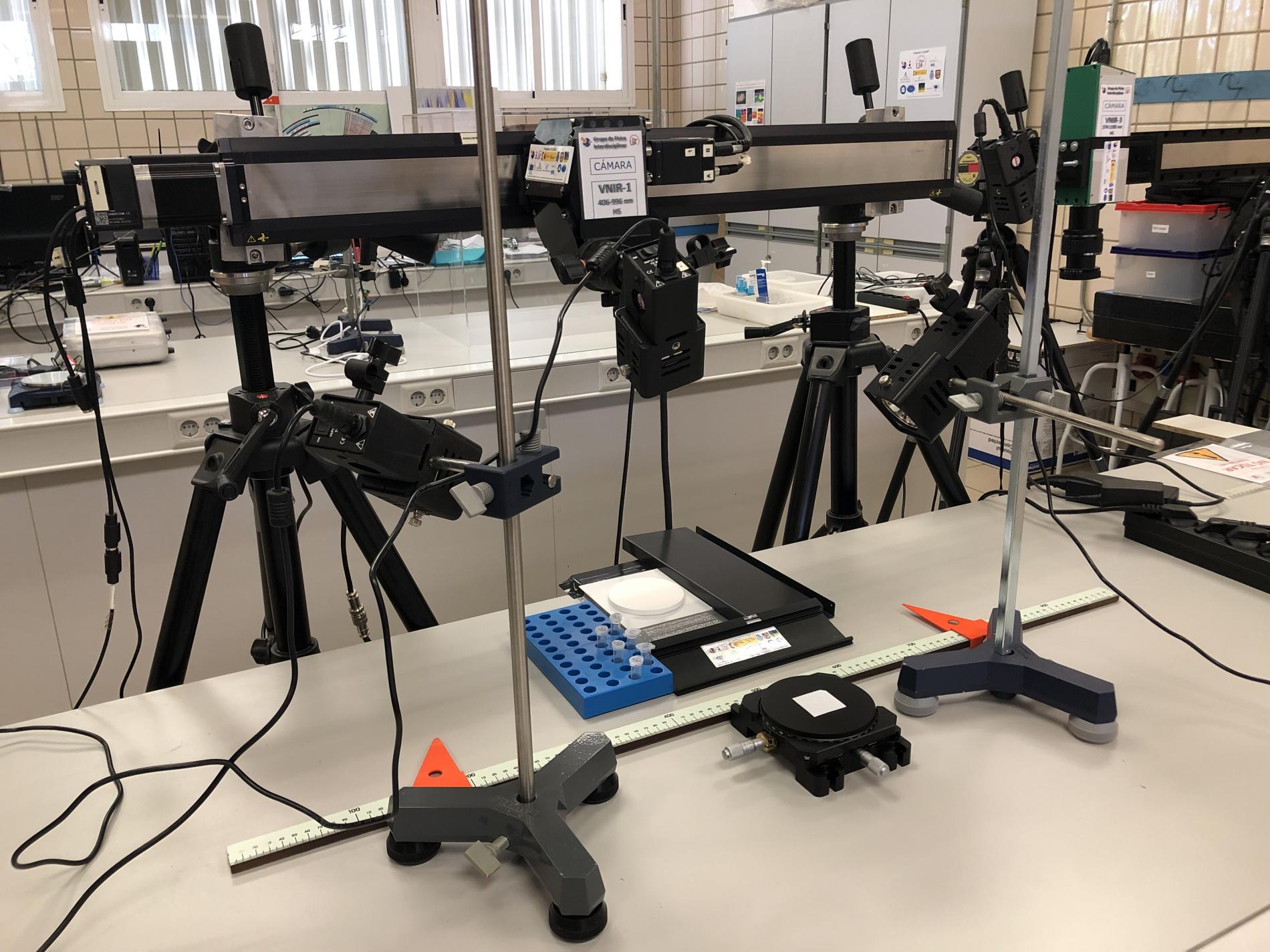New technique to detect, without contact, viruses on surfaces
Based on the use of hyperspectral images and data processing with advanced statistics and artificial intelligence, it has been successfully applied in two synthetic models of SARS-CoV-2. The research, which continues in humans, has been funded by the Carlos III Health Institute and has made it possible to patent a technique capable of simultaneously analyzing numerous samples without the need for contact or reagents
A Spanish scientific team, headed by the University of Seville and in which the Institute of Astrophysics of Andalusia (IAA-CSIC) and the Calar Alto Observatory (CAHA) participate, has designed and patented a new optical technique that allows detecting the presence of virus in fluid droplets and dry debris on a surface. The results have been published in the journal Scientific Reports (Nature Publishing Group), and the team continues to actively work on the analysis of human samples with SARS-CoV-2.
The new technique is based on the recording of hyperspectral images in the visible and near infrared ranges and their processing using advanced statistical algorithms and artificial intelligence. It has been applied to the detection of two types of synthetic viruses commonly used as SARS-CoV-2 models (synthetic lentiviruses and coronaviruses) in two fluids (saline and artificial saliva).
The designed method uses hyperspectral imaging technology, recently used for the detection of pathogens, mainly bacteria and fungi, in the agricultural industry and in biology. “Our work develops and extends this technology to the healthcare field for the detection of viruses through an innovative and complex process. In summary, the system records images of the samples arranged in a matrix and determines the positions in which the presence of virus and its concentration are detected”, indicates Emilio Gómez González, professor at the Higher Technical School of Engineering of the University of Seville (US) leading the investigation.

This new technique will allow rapid and non-contact analysis of contaminated areas and, in turn, may represent a breakthrough by having methods that help clean and decontaminate medical devices and facilities and reduce contagion by contact.
The Institute of Astrophysics of Andalusia (IAA-CSIC) participates in the project through CODULAB, its Cosmic Powder Laboratory. The laboratory, which studies how dust particles scatter light, allows the study of celestial objects such as planetary atmospheres or comets, but also of terrestrial phenomena such as dust storms or volcanic eruptions. "In 2020 we adapted CODULAB to detect viruses on surfaces, and added polarimetry to the different optical techniques that were being studied as a diagnostic tool to detect the SARS-CoV-2 virus on surfaces of different materials", points out Olga Muñoz, researcher at the IAA-CSIC that participates in the work and directs CODULAB.
RESEARCH WITH STRONG ANDALUSIAN COMPONENT AND EUROPEAN SUPPORT
The work has been developed within the framework of the Project called C-CLEAN of the COVID-19 Emergency Call of the Carlos III Health Institute, dependent on the Ministry of Science and Innovation. This publication is the first published result of a project that generated great interest when it was launched just over a year ago, in the middle of the first wave of the pandemic. This project has been carried out in a very short time, fifteen months, and in the extraordinarily difficult circumstances derived from the COVID-19 pandemic.
More than thirty researchers from ten different institutions participate in the C-CLEAN Project: the University of Seville, as research coordinator, in addition to the TEDAX-NRBQ Group of the National Police, the Virgen del Rocío and Virgen de la Macarena hospitals in Seville, the Institute of Biomedicine of Seville (IBIS), the Andalusian Network of Design and Translation of Advanced Therapies, the University of Cádiz-INIBICA, the Calar Alto Observatory (Almería), the Institute of Astrophysics of Andalusia-CSIC (Granada), the Andalusian Technological Corporation (CTA) and the HUMAINT Project of the Joint Research Center (JRC) of the European Commission.
E. Gómez-González et al, Hyperspectral image processing for the identification and quantification of lentiviral particles in fluid samples, Scientific Reports, August 2021. https://www.nature.com/articles/s41598-021-95756-3
Instituto de Astrofísica de Andalucía (IAA-CSIC)
Unidad de Divulgación y Comunicación
Silbia López de Lacalle - sll[arroba]iaa.es - 958230676
https://www.iaa.csic.es
https://divulgacion.iaa.csic.es

